The Employment Situation in February
By Chair Cecilia Rouse
Today’s jobs report shows that the economy added 678,000 jobs in February, for an average monthly gain of 582,000 over the past three months. The number of jobs added in February came in well above market expectations. Employment in January and December was also revised up by 92,000 jobs.
The unemployment rate fell to 3.8 percent. The labor force participation rate ticked up to 62.3 percent, reaching a new pandemic high. Nominal wages functionally held steady over the month, but increased by 5.1 percent over the past year.
- Average monthly job growth over the last three months was 582,000, a fast pace.
Job growth from December to February averaged 582,000 jobs per month (see Figure 1). Since monthly numbers can be volatile and subject to revision, the Council of Economic Advisers prefers to focus on the three-month average rather than the data in a single month, as described in a prior CEA blog.
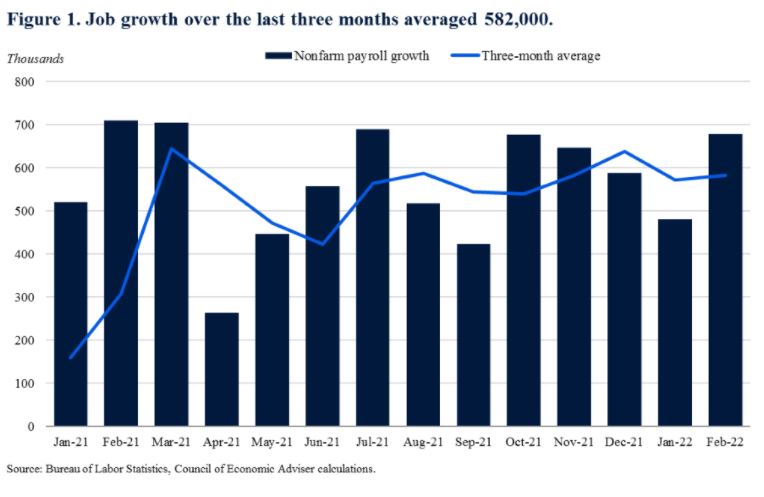
Nevertheless, the labor market has not fully recovered: employment remains about 2.1 million jobs (1.4 percent) below the pre-pandemic level.
2. During the pandemic recovery, the labor market has seen extraordinary job growth. As the recovery continues, monthly job growth will likely begin to return to a pre-pandemic pace.
In 2021, job growth averaged 562,000 jobs per month. In contrast, from 2011 to 2019, job growth averaged about 194,000 jobs per month. Overall, the recovery from the pandemic recession has been much faster than after past recessions.
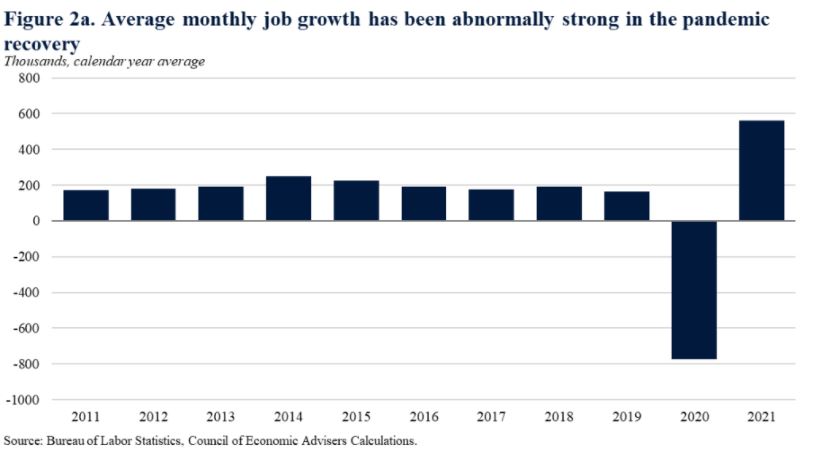
While it is unclear when the pace of job growth will slow, it will almost certainly slow at some point. Indeed, during the later years of the recovery from the Great Recession, job growth was slower when the unemployment rate was lower. (As the jobless rate falls and the labor market closes in on full employment the number of available workers begins to decline).
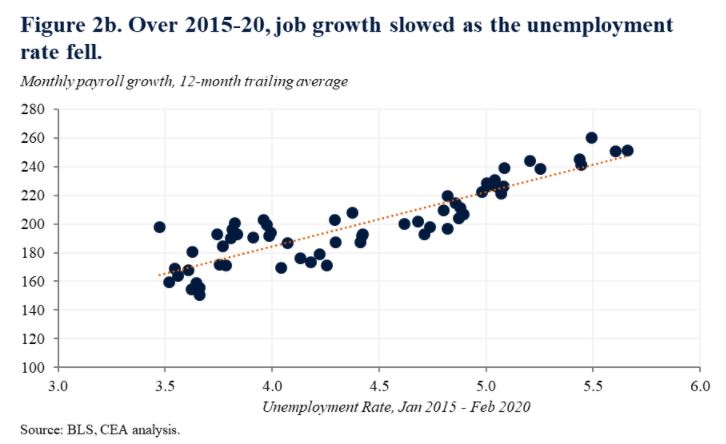
3. The shares of the labor force experiencing long-term unemployment or involuntary part-time work have fallen dramatically in the pandemic recovery.
The long-term unemployment rate, defined as the percentage of the labor that has been out of work for 27 weeks or longer, is currently 1.0 percent. It held steady from January to February, but has dropped during the pandemic recovery from a high of 2.6 percent.
Long-term unemployment is often a source of “scarring” after a recession – where workers suffer economic impacts for substantial time after the recession ends. During the Great Recession, the long-term unemployment rate reached 4.4 percent and did not reach 1.0 percent until 2017 – about seven years later. The rapid decline in long-term unemployment is one way in which scarring has been less of a problem during the pandemic recovery than during other economic recoveries.
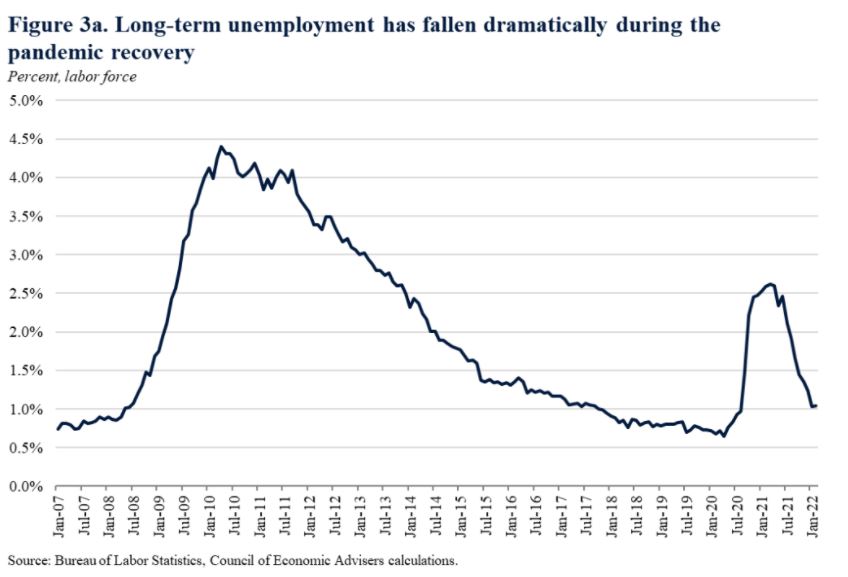
Another way in which “scarring” can affect workers is through elevated rates of working part-time for economic reasons—the share of workers who cannot get all the hours they want because either they can’t find a full-time job or because business conditions are weak. But similar to the long-term unemployment rate, this measure has seen rapid recovery. The percent of the labor force that is working part-time for economic reasons ticked up in February to 2.5 percent, but remains below its level in February 2020.
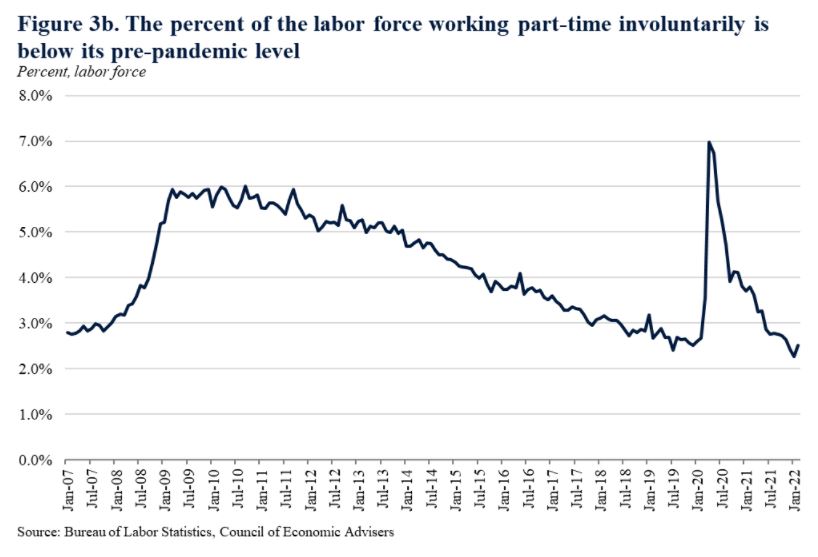
4. The employment rate for workers age 25 to 54 rose in February, part of a relatively consistent rise. However, the headline numbers mask differences by gender.
The “prime-age” (25 to 54) employment rate was 79.5 percent, up from 76.6 percent a year ago (Figure 4a). The Council of Economic Advisers prefers to look at the prime-age labor force participation rate because it is less affected by long-run changes in educational enrollment and the natural slowdown in labor force participation caused by the aging of the population and retirements.
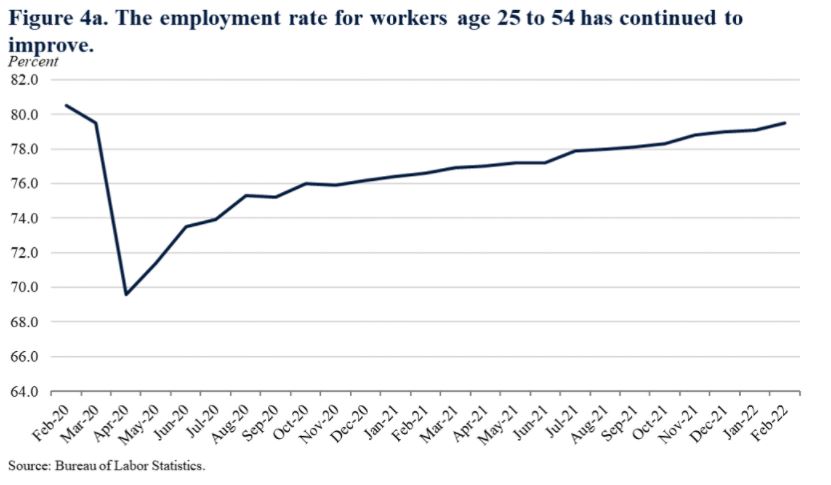
However, both the employment rate and the participation rate for prime-age men increased much faster than they did for women in February (Figure 4b). It is unclear why the pace of increase was so much faster for men in February in the household survey. The establishment survey in contrast showed that the increase in payroll employment was about evenly split between men and women.
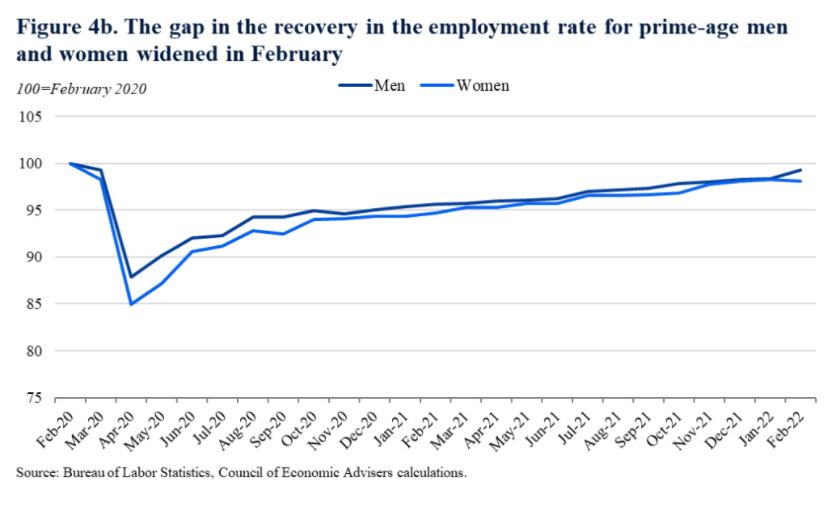
As the Administration stresses every month, the monthly employment and unemployment figures can be volatile, and payroll employment estimates can be subject to substantial revision. Therefore, it is important not to read too much into any one monthly report, and it is informative to consider each report in the context of other data as they become available.

